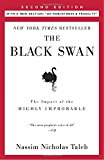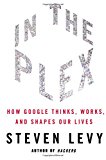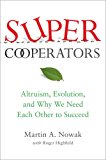 Crowdsourcing is an interesting concept. There is a huge amount of potential to the approach and a vast untapped business opportunity. After all social media and many of the big sites are built off of the crowd and their willingness to participate and create. But there’s a problem. Crowdsouring either generates huge, market changing behavior (think Wikipedia) or massive consumer backlash. Crowdsourcing is something that I’ve been tracking for a while and 2011 has been an interesting year.
Crowdsourcing is an interesting concept. There is a huge amount of potential to the approach and a vast untapped business opportunity. After all social media and many of the big sites are built off of the crowd and their willingness to participate and create. But there’s a problem. Crowdsouring either generates huge, market changing behavior (think Wikipedia) or massive consumer backlash. Crowdsourcing is something that I’ve been tracking for a while and 2011 has been an interesting year.
Earlier in the year Mashable ran an article about the challenges in the design profession, of which, crowdsourcing made the list:
“A risk of false economy; that’s how I would typically sum up the crowdsourcing route. It may seem financially attractive — if you have low funds, the lure of hundreds of designs from thousands of designers with a worldwide catchment area is certainly compelling.”
@RossKimbarovsky, co founder of crowdSPRING, a company right at the center of the debate, has a lot to say amd Crowdsourcing Moved Your Cheese is a good article that I think gets at the heart of the matter. There are certain clients who like the crowdsource approach and their are certain designers who will participate in “spec” (speculative) work. The important thing to note is that the designers who don’t participate in or like spec work, *really* don’t like spec work or crowdsourcing. These are the serious designers who value the art of the their field. There’s also a lot of angst among this crowd because they see their business model eroding. Not that it will ever go away, but to think it’s not a threat would be foolish. Ad guy, @EdwardBoches posted earlier this year that some ad agencies are even moving into this space themselves. If you can’t beat them, join them?
Knowing that the two markets are polar opposites to the other it seems like the worst thing you could do is launch a crowdsource competition aimed directly at the design crowd, right? Yes, in fact that would be the worst thing you could do. And Moleskine proved this completely.
Moleskine’s Crowdsourcing Failure
The beloved Moleskine brand, which I use religiously, and holds a place in designers hearts second only to Apple, decided to engage their community of passionate designers and asked them to help design a logo for their Moleskinerie blog. They used Designboom, a well known player in the design competition space, to run the contest. It quickly blew up, in spectacular fashion. You can read about the fallout here and here.
Their Facebook page was overrun and as many companies in this situation did, they responded poorly. They first tried to defend their stance, and I’ve heard (but not witnessed myself) that they initially started deleting negative responses.
Eventually they course corrected on their Facebook page:
Earlier this month, we asked the community to help create a logo for our blog, Moleskinerie. Our intent was to celebrate the creativity of designers and support our blog community. We should have foreseen that the structure of the contest would raise questions about crowdsourcing. We didn’t, and we’re sorry. To make matters worse, our initial responses to your comments didn’t communicate the support and respect we feel for all of our users.
We are devoted to celebrating the tremendous value of design and in turn pledge that we will not make any commercial use of any of the artwork entered into our contest.
You can read our full response on our blog: http://www.moleskinerie.com/20
Crowdsourcing contests can work for companies but you need to know why you’re doing it. Using crowdsourcing contest sites to get design work done can be very useful as long as you know what you’re getting. When I first launched this site my design friend who helped me used such a service extensively and she managed the whole process for me. For someone just starting off, without a lot of money (I was basically unemployed at the time) it has value. But asking for “free” work and making it a contest is totally different. Which is basically the way Moleskine’s contest was perceived by their community.
- Asking amateurs to enter a contest that may involve some sort of creation work, is usually fine (this will vary by audience and by campaign).
- Asking professionals to do free work is a really bad idea.
What do you mean by “Contest?”
Some of the confusion here is in the syntax and context of “contest.” Sites like Designboom and crowdSPRING, run their spec work as “contests.” But really you’re just asking entry level and amateur designers to do free work with the chance they’ll get paid. (Honestly it’s not that much different than the RFP process most agencies regularly go though but with RFP’s the filed is limited, the payout is huge and the odds of winning are pretty good.) Some designers know how to work this type of game and mass produce results (sometimes ripping off other designers) in hopes that their quantity of submissions will get them enough wins to make it worth their time. Other designers, often still in college or high school (or younger) enter these contests as a way to build their portfolio and gain experience.
But to run a design “contests” like you would run any other kind of marketing “contest” is a huge mistake. This is where I believe companies like Designboom mislead unsuspecting marketing managers at companies like Moleskine. This is not the normal, “Follow us on Twitter for a chance to win” competition. Even my personal favorite (by favorite, I mean I’d rather claw my eyes out than pitch it to a client) the “Make a video telling us how great our company is” contest is better than what Moleskine did.
I don’t blame Moleskine, because I believe they didn’t mean any harm and I believe they’ve taken their lashings. The only thing they’re guilty of is not understanding their core customers well enough and using faulty logic. Because at face value, the idea - we have a huge audience of designers, let’s run a contest where they get to design something - seems to make sense. It makes sense if you don’t understand designers.
In the end it will take them a long time to win back the trust of the design crowd. And they’ll probably never get many of them back. Which is sad.
You Can’t Ignore Crowdsourcing
Some of you reading this will be adamantly against spec work and I’ve heard many of you compare it to slave labor (and there’s some evidence to support that). Others will argue that if people don’t like it, they don’t have to participate. I’ve learned, and I’ve said this several times before, anytime something elicits this kind of a visceral response it’s something important to watch. Crowdsourcing and spec work elicit the kind of visceral response that tells me they’re very important to watch.
Similar Posts:
- How Will Your Business be Crowdsourced?
- Should Brands Build Their Own Social Networks?
- Making a Living in the Crowd: Update
# of Comments 6
# of Comments 3
# of Comments 2







